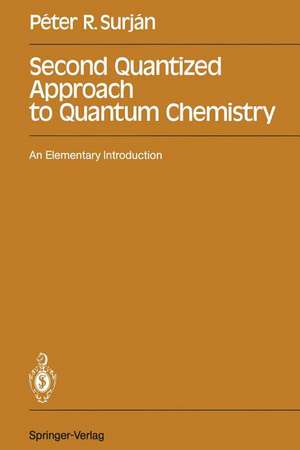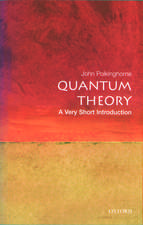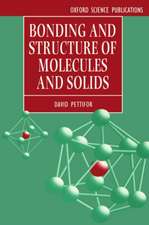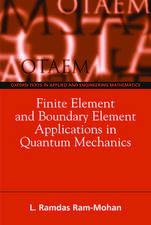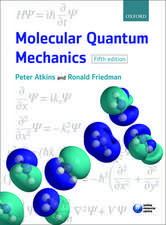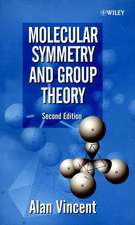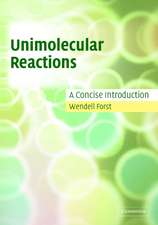Second Quantized Approach to Quantum Chemistry: An Elementary Introduction
Autor Peter R. Surjanen Limba Engleză Paperback – 13 dec 2011
Preț: 523.91 lei
Preț vechi: 616.36 lei
-15% Nou
Puncte Express: 786
Preț estimativ în valută:
100.26€ • 104.54$ • 83.33£
100.26€ • 104.54$ • 83.33£
Carte tipărită la comandă
Livrare economică 21 martie-04 aprilie
Preluare comenzi: 021 569.72.76
Specificații
ISBN-13: 9783642747571
ISBN-10: 3642747574
Pagini: 204
Ilustrații: XIII, 184 p.
Dimensiuni: 155 x 235 x 11 mm
Greutate: 0.32 kg
Ediția:Softcover reprint of the original 1st ed. 1989
Editura: Springer Berlin, Heidelberg
Colecția Springer
Locul publicării:Berlin, Heidelberg, Germany
ISBN-10: 3642747574
Pagini: 204
Ilustrații: XIII, 184 p.
Dimensiuni: 155 x 235 x 11 mm
Greutate: 0.32 kg
Ediția:Softcover reprint of the original 1st ed. 1989
Editura: Springer Berlin, Heidelberg
Colecția Springer
Locul publicării:Berlin, Heidelberg, Germany
Public țintă
ResearchCuprins
1 Introduction.- 1.1 Importance of Second Quantization.- 1.2 The One-Electron Model.- 2 Concept of Creation and Annihilation Operators.- 2.1 The Vacuum State.- 2.2 Creating Electrons.- 2.3 Particle Number Representation.- 2.4 Annihilating Electrons.- 2.5 Commutator Relation between Creation and Annihilation Operators.- 2.6 The Adjoint Relation — Role of Orthogonality of One-Particle States.- 2.7 Summary of the Properties of Creation/Annihilation Operators.- 3 Particle Number Operators.- 4 Second Quantized Representation of Quantum Mechanical Operators.- 4.1 General.- 4.2 One-Electron Operators.- 4.3 Two-Electron Operators.- 4.4 Second Quantized Form of the Born-Oppenheimer Hamiltonian.- 4.5 Hermiticity of Second Quantized Operators.- 5 Evaluation of Matrix Elements.- 5.1 Basic Matrix Elements.- 5.2 Concept of the Fermi Vacuum.- 6 Advantages of Second Quantization — Illustrative Examples.- 6.1 General.- 6.2 Overlap of two Determinants.- 6.3 Hückel Energy Expression.- 6.4 Interaction of Two Electrons.- 7 Density Matrices.- 7.1 First-Order Density Matrix.- 7.2 Second-Order Density Matrix.- 7.3 Hartree-Fock Energy Expression.- 8 Connection to “Bra and Ket” Formalism.- 9 Using Spatial Orbitals.- 10 Some Model Hamiltonians in Second Quantized Form.- 10.1 ?-Electron Hamiltonians.- 10.2 Particle-Hole Symmetry.- 10.3 All-Valence Electron Hamiltonians.- 10.4 The Hartree-Fock Hamiltonian.- 11 The Brillouin Theorem.- 12 Many-Body Perturbation Theory.- 13 Second Quantization for Nonorthogonal Orbitals.- 13.1 Anticommutation Rules.- 13.2 The Hamiltonian in Nonorthogonal Representations.- 13.3 Extended Hückel Theory.- 14 Second Quantization and Hellmann-Feynman Theorem.- 14.1 General.- 14.2 Variation of Energy-Orthogonal Basis Set.- 14.3 Variation of Energy-NonorthogonalBasis Set.- 14.4 Special Case: The SCF Gradient Formula.- 15 Intermolecular Interactions.- 15.1 The Operator for Interaction.- 15.2 Symmetry-Adapted Perturbation Theory.- 16 Quasiparticle Transformations.- 16.1 One-Particle Transformations.- 16.2 Two-Particle Transformations.- 16.3 A Theory of the Local Chemical Bond.- 17 Miscellaneous Topics Related to Second Quantization.- 17.1 Spin Operators and Spin Hamiltonians.- 17.2 Unitary Group Approach.- 18 Problem Solutions.- 19 References.
